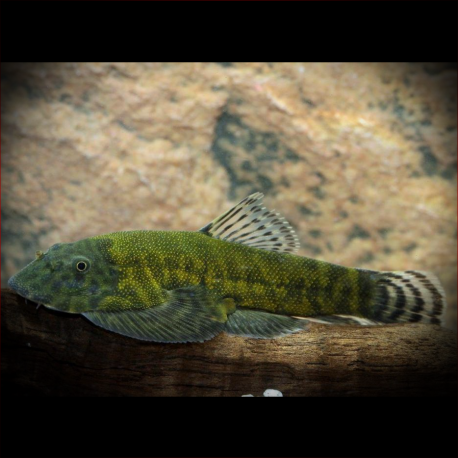More info
Datasheet
| Minimum Tank Size | 120 litres / 31.70 US gallons |
| Maximum Size | 10.0cm / 3.94inches |
| Temperature | 18°C / 64.40°F - 24°C / 75.20°F |
| Hardness | 2.02dgH / 36ppm - 12.05dgH / 215ppm |
| pH | 6.0-8.5 |
General Description
Gastromyzon lepidogaster is a species of loach that is occasionally available in the aquarium trade, featuring a plain brown, grey, or black body when preserved, but vibrant green or orange hues in life. It can grow up to 10.0cm in size and possesses distinctive features such as a rounded snout and a powerful sucking cup formed by fused pelvic fins.
Aquarium Setup
Setting up an aquarium for G. lepidogaster involves ensuring clean, well-oxygenated water with a turnover rate of 10-15 times per hour. Utilizing gravel or sand substrate with water-worn rocks and pebbles, along with aged driftwood, is recommended. Aquatic plants like Microsorum and Anubias spp. can be included, and strong lighting is essential for algae growth, a vital part of the fish's diet. Regular water changes and a secure cover are necessary for this species.
Behaviour
Known for its peaceful nature, G. lepidogaster displays territorial tendencies, especially around prime feeding spots. In groups of 4 or more, they exhibit interesting behaviors. They thrive in the company of suitable tankmates like small cyprinids, stream-dwelling gobies, and rheophilic catfish, but should be kept away from aggressive or much larger fish.
Feeding and Diet
In the wild, G. lepidogaster feeds on benthic algae and micro-organisms, which can be replicated in captivity with algae-covered surfaces and a diet of high-quality dried foods, live or frozen bloodworms, and home-made foods with vegetables and Spirulina. Adequate algae growth in the tank is crucial, and a separate tank to grow algae may be required if the main tank lacks sufficient supply.
Reproduction & Dimorphism
Breeding G. lepidogaster in captivity is challenging, with limited successful attempts reported. Male and female adults exhibit slight differences in size and body shape. A successful breeding attempt involved a specific setup with substrate and natural plants, resulting in the hatching of tiny, non-adhesive eggs.
Habitat and Distribution
Endemic to Borneo, G. lepidogaster is found in swift, shallow streams with clear, oxygen-rich water. It prefers gravel and rock substrates covered in biofilm and is commonly observed above or below cascades in partially shaded areas. The species has a wide distribution across various rivers in Sabah, Brunei Darussalam, and East Kalimantan, Indonesia.

